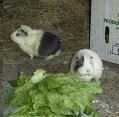|
 Home Home
 What's New? What's New?
 Definition Definition
 Our Design Our Design
 Techniques Techniques
 Articles Articles
 Blog Blog
 About Us About Us
 Year Planner Year Planner
 Resources Resources
 Links Links

Like us on
FaceBook!

Link to this site
|
|
Permaculture Techniques - Recycling
Description
Recycling means using materials more than once, often altering their form by some process to render them useful in ways than their original intended use. Recycling involves imaginative thinking. All organic substances can be recycled ultimately into compost, and many inorganic items can be used creatively in a permaculture system.
Benefits
- Reduction in cost
- Reduction in production of new materials, thus reducing consumption and manufacture of new materials
- Return of nutrients to nature via composting, natural decay
- Promotes awareness, responsibility, tolerance and creative expression
- Reduction of waste; waste management on site instead of contributing to land fill rubbish tips, air pollution by incineration, ground water and tip site pollution.
- Energy used to recycle is usually less than that required to manufacture from raw materials.
Procedure
- Stop buying new stuff, start scavenging.
- Start composting.
- Organise a depot on-site for recycle material storage. Keep it near to the back door for household items, further away for larger items, but near to eventual destinations and tool shed!
- If it can be burned it can be recycled - consider all uses first.
- Paper products can be turned back into paper, used as mulch, composted (beware of toxic inks and dyes)
- Cardboard can be used as mulch or composted (watch out for increasing boron levels, remove plastic tapes, etc)
- Kitchen scraps can be fed to animals or composted
- Metal can often be recycled on site with a little ingenuity (old beds for fences, food cans for plant pots or ant traps under seedling bench legs, etc) or can be taken to a recycle depot (sometimes for cash returns)
- Water can be used several times; eg. rainwater used in house recycled in grey water system for irrigation (care should be taken with choice of soaps, detergents and other chemicals).
- Other items can be recycled into craft or art objects as a hobby income.
- Glass recycling depots are available, or use imaginatively in building or craft projects, or for personal food processing.
- Plastic can be taken to recycle depots after several uses (try to avoid purchasing at all in the first place though!)
|
|

Our ever-changing view!
Moonset ~ Roll Cloud ~ Sunset
|
permaculture ethics |
care for earth,
care for people,
return surplus,
reduce consumption |
 |
|
Recently Added Pages
Hot Links!

Bookworm is currently reading...
This site is sponsored by
ALWAYS LEARNING BOOKS
Publishers of Australian
books on Home Education.
  The Educating Parent The Educating Parent
  Beverley's other websites Beverley's other websites
|





